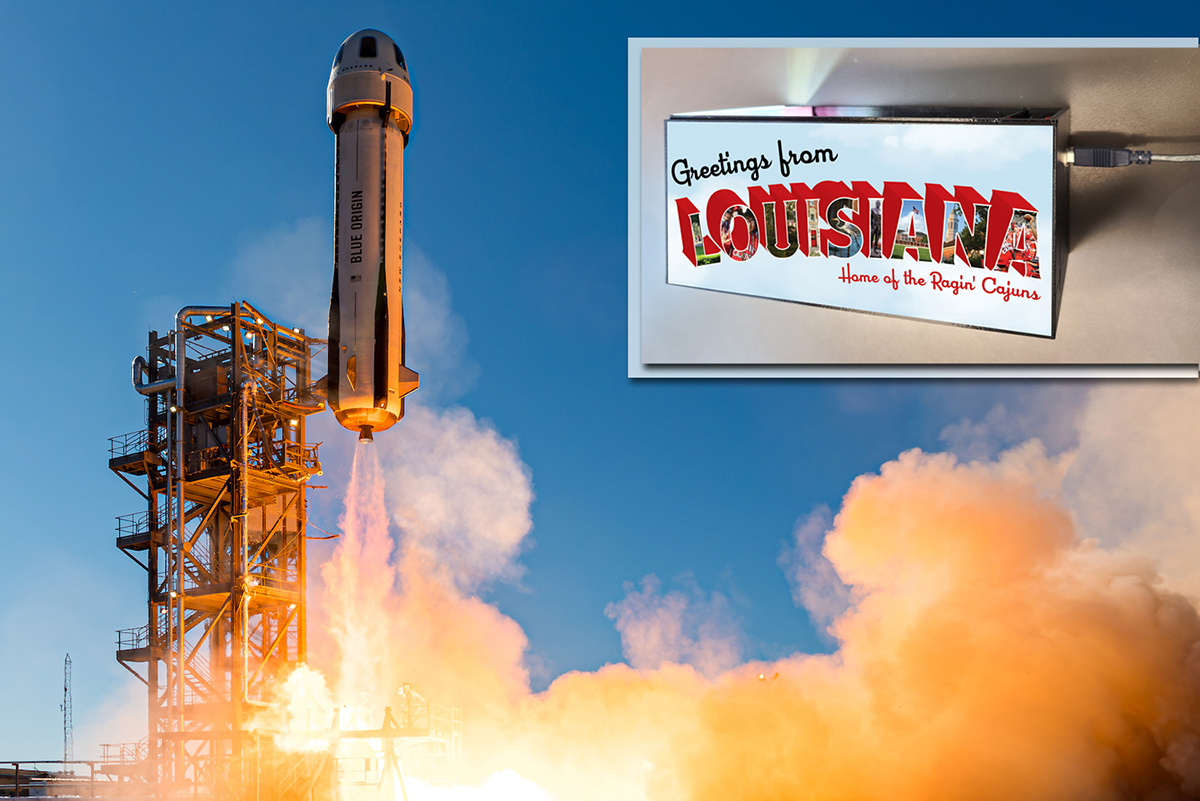Dr. Karl Hasenstein’s current research in his ongoing quest to find the most efficient ways to grow plants and vegetables in space will examine the behavior of fluids at lunar gravity.
For the experiment, Hasenstein, a distinguished professor emeritus of biology at the University of Louisiana at Lafayette, will rely on data gathered in space – but not anywhere near the Moon.
The basis for Hasenstein’s research will be what unfolded inside a small, closed system during its journey into space on Tuesday as part of a research project led by 4SPACE. The company sponsors both scientific payloads and payloads for commercial applications.
"4SPACE is quite proud to be working with Dr. Karl Hasenstein on this lunar gravity mission, and we celebrate this historic launch and our success and look forward to the results," said Chantelle Baier, founder and CEO of the company.
Hasenstein's closed system, which he built, is outfitted with tiny chambers that hold liquids, and cameras to record how those liquids respond at lunar gravity.
The scientist’s research is being conducted to inform longstanding efforts to colonize the Moon or, as he calls the Earth’s only natural satellite with a laugh, “what many people have long hoped will become the 51st state.”
Human existence on the Moon, however, would require self-sufficiency, including building systems to create water – and using that water to effectively grow crops and vegetables.
Lunar gardening would require the know-how to cultivate plants in the Moon’s soil, which is heavy with dust and rocks called regolith, Hasenstein said. Scientists will also need to figure out how to make horticulture work in an environment where gravity is one-sixth of that on Earth.
“Water distribution in plants and its percolation, or absorption, through soil are processes that are essential for growth, and they are gravity dependent,” Hasenstein explained. “But we don’t know how water behaves at that reduced gravity, or how much percolation you’d see through the lunar regolith.”
Not yet at least. Hasenstein’s research in that realm took flight in earnest Tuesday when his closed system – stowed aboard the New Shepard suborbital rocket system – was launched up and beyond the Kármán line, the internationally recognized boundary for space.
Blue Origin, Jeff Bezos’ space company, sent the pilotless spacecraft skyward with several scientific payloads from Launch Site One, near Van Horn, Texas. The New Shepard’s rocket and its capsule that detached in space returned separately and safely to Earth following a roughly 11-minute journey.
The short trip provided plenty of time – and the ideal conditions – for Hasenstein’s purposes. That’s because, at about 110,000 feet, the capsule successfully detached from the rocket, sending the capsule into free fall, or a period of weightlessness, for several minutes.
Hasenstein’s interest in that period of weightlessness rests on the moments when the rotating capsule produces the right amount of centrifugal force to replicate the Moon’s gravitational pull.
“That’s the time crucial to our experiment,” explained Hasenstein, who will mine images taken inside his closed system during the capsule’s thrust-driven rotation for a wealth of data.
It’s the sort of work to which he’s well accustomed. He’s spent three decades researching ways to grow plants and vegetables in space. As part of research funded by NASA, he has sent flax, radishes and Brassica rapa plants, a representative of some of the most common vegetables, to the International Space Station.
Hasenstein’s experiments aboard the space station have examined how plants growing inside artificial habitats sense and react to gravity in a weightless environment. He has also studied how altered or reduced gravity affects plants’ growth and metabolism.
NASA is examining methods for producing vegetables for astronauts during long missions. The agency’s interest in growing plants in space is also rooted in its plan to put scientists on Mars in coming decades, an effort to which Hasenstein has been a key contributor.
For his current experiment, Hasenstein’s comprehensive post-flight research will focus on studying fluids, including water and water mixed with glycerol, for a host of variables that impact water distribution in plants. Scientists at NASA and Florida Tech University who are contributing to the project will assist with the research.
“We will be able to assess how much more or less water is going to be needed to grow plants on the moon in comparison to what we have on Earth. That is the bottom line,” he said.
Watch New Shepard's journey into space and return to Earth.
Photo caption: Dr. Karl Hasenstein’s current research in his ongoing quest to find the most efficient ways to grow plants and vegetables in space will examine the behavior of fluids at lunar gravity. The biologist's experiment was launched into space today aboard Blue Origin's New Shepard rocket system as part of an effort sponsored by 4SPACE. Photo credit: Blue Origin (Insert: University of Louisiana at Lafayette)
About 4SPACE
4SPACE specializes in enabling non-traditional companies to enter the space industry to expand commercial markets. Currently, 4SPACE is working on several lunar missions, developing technologies and capabilities that allow for more commercial entities to put their brands on the Moon. Our focus is on blending space with sports, AI, music, media, entertainment, fashion, and luxury in a scientifically relevant way, leading to the creation of new technologies and materials for both the space industry and individual brands. As such, 4SPACE is both technical and design-focused. We have the experience and capability to provide end-to-end solutions for any company to take advantage of the space industry in a unique, innovative, sustainable, and profitable manner.
